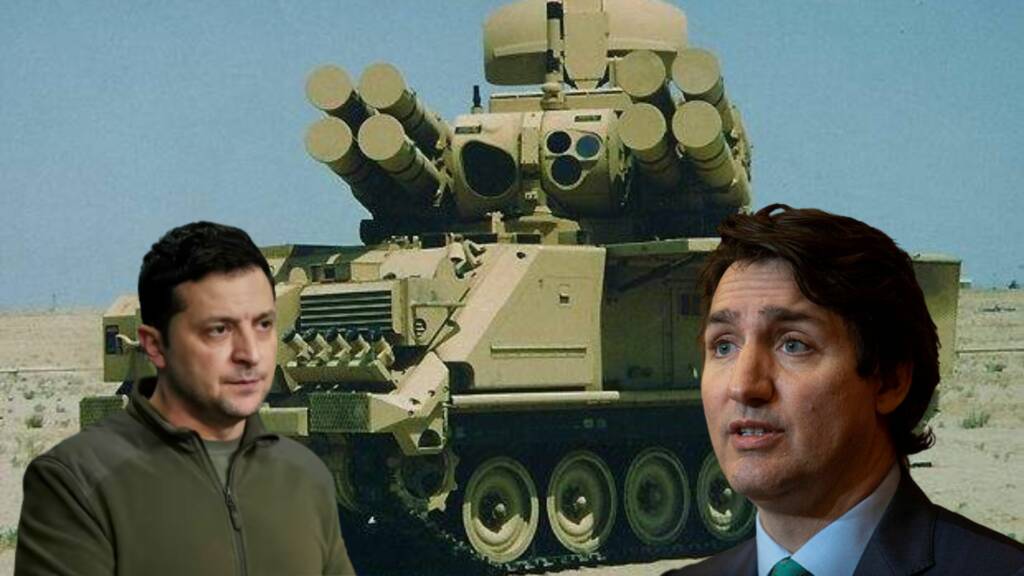A few months ago, the Chief of the Defence Staff (CDS), General Wayne Eyre, made a tacit acknowledgment of what most people in the Canadian Armed Forces (CAF) (Canadian Army) have long known—the military is in serious trouble and unable to sustain its current commitments in the present state. While it is easy enough to point at the depleted state of its core capabilities like aircraft and ships, the evidence of the crisis is evident everywhere- from aviation industry to the housing sector.
In most other countries, this would have resulted in political leaders quitting. Nonetheless, it scarcely made a stir in the news. While CDS Eyre has laid out a strategy to address the situation, there are major concerns that he will be able to do so, partly because the problem is so grave, and partly because he lacks the required instruments.
Many factors contributed to the CAF reaching this tipping point. While COVID has been a serious retention concern, several of these tendencies predate the pandemic. A critical component is finance. Simply put, too little money has been spent on the department since the Cold War’s end, and it has now caught up to the military.
Recruitment is one such area and a major source of the personnel problems the military currently faces. Moreover, the department’s procedures and functions have become particularly problematic and had a detrimental impact on the lives of its soldiers. This is not a new challenge, as finding the balance to sustain the CAF during peacetime and war has been fought since the 1950s.
Particularly problematic is the capital base of the armed forces, from physical facilities to the actual planes, ships, and vehicles. Everywhere one looks, the CAF is crumbling due to significant underinvestment. Moreover, the basic tools that soldiers need to conduct their mission are simply falling apart.
For example, the Royal Canadian Navy’s frigates—12 vessels that constitute the vast majority of the navy’s ability to protect the country—are in a dilapidated state. The fleet is now roughly over twenty-five years old and is starting to show its age after years of hard deployments worldwide. Seven of the ships are currently in yards undergoing refits or repairs, which means fewer deployments are available for crews. Unable to serve on their assigned systems for too long, many sailors become disillusioned and leave the service. It’s a problem experienced by many within the CAF and not just limited to the Navy.
While some people see too few deployments, others are frequently over-committed. Because of understaffing, a small number of important specialists are used indefinitely. Some people spend six months or more away from home, only to be sent away again six months later. Undermanning has reached 50% of allowed strength in certain of these roles, such as aircraft maintainers or sensor technicians. These experts burn out and quit the military, leaving fewer people to bear the responsibility and aggravating the “death spiral.” There will eventually be no one available to fill these important posts.
Against this backdrop, the Canadian government has been reported to be purchasing weaponry to assist Ukraine. Yes, you read that correctly: Ottawa, whose own military is impoverished, is spending millions to help others.
The Canadian Army is fast-tracking its purchase of anti-tank weapons and an air defence system to be used by its troops stationed in Latvia, defence industry officials have been told.
In addition, the Canadian Army will buy a counter-drone system to be used for Operation Reassurance, the Canadian Forces mission in eastern Europe.
The equipment is being classified as an Urgent Operational Requirement, the same process used during the Afghanistan war to speedily obtain gear without going through the slower traditional procurement process.
Hardy noted in his briefing that the Canadian Army will buy a short-range air defence system for Canadian troops now in Latvia. That purchase would “counter the assessed air threat from within the Baltic region,” he pointed out.
The Canadian Army will also buy a mobile counter drone system to “ensure freedom of action for operations in the land domain for forces deployed on Op Reassurance,” Hardy added. The system would be designed to deal with mini and small drones.
Also Read: Trudeau’s reign of wokeism leaves long-term negative effects on Canada
Canada, you see, has committed more than $1 billion to Ukraine for military equipment, including an air defence system. The Canadian government has spent $5 billion on Ukraine during the last year. Worse, the Canadian Army has been without the same air defence capacity that Trudeau has recently decided to deliver to Ukraine, since 2012, despite repeated attempts over the last decade the army to persuade governments to purchase such weapons.
Trudeau’s decision to assist Ukraine first even when the Canadian lives are at stake shows his irresponsible attitude towards his own countrymen. These countrymen voted Trudeau in power thinking that the man has the abilities to solve Canada’s longstanding problems and govern Canada in a better way but his wokeness is leading Canada towards darkness.
In other words, the Liberal government prioritizes to equip another country’s army over its own. That may sound strange, but this is exactly what wokeness does to your brain.
https://www.youtube.com/watch?v=sy9YbdlYQfg
